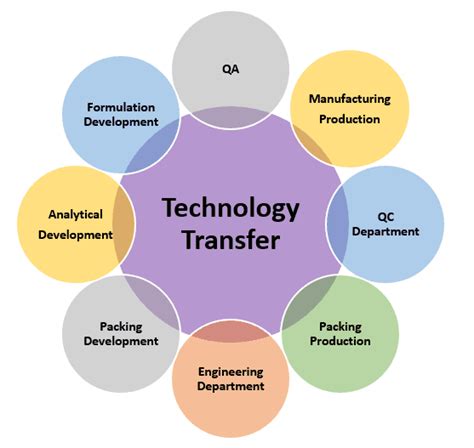The biotechnology industry has been at the forefront of scientific innovation, with breakthroughs in gene editing, synthetic biology, and personalized medicine transforming the way we approach healthcare and disease treatment. However, the journey from lab to market can be long and arduous, with many promising technologies failing to make it to the clinic or marketplace due to inadequate tech transfer. In this article, we will explore the concept of tech transfer in biotech and provide five ways to boost it.
Biotechnology is an interdisciplinary field that combines biology, chemistry, and engineering to develop innovative products and technologies. From genetic testing and gene therapy to regenerative medicine and biomanufacturing, the biotech industry has the potential to revolutionize healthcare and beyond. However, the translation of scientific discoveries into commercial products and therapies requires a critical step: technology transfer.
Technology transfer refers to the process of transferring intellectual property, knowledge, and expertise from academia and research institutions to industry partners, startups, and other stakeholders. In biotech, tech transfer involves the licensing, partnering, and commercialization of research discoveries, patents, and other intellectual property. Effective tech transfer is crucial to bridge the gap between basic research and product development, ultimately bringing innovative technologies to the market.
Challenges in Tech Transfer
Despite its importance, tech transfer in biotech is often plagued by several challenges. These include:
- Valuation and licensing: Determining the value of intellectual property and negotiating licensing agreements can be complex and time-consuming.
- Funding and resources: Biotech startups and research institutions often lack the necessary funding and resources to support tech transfer.
- Regulatory hurdles: Navigating regulatory frameworks and ensuring compliance can be a significant barrier to tech transfer.
- Cultural and institutional barriers: Collaboration between academia and industry can be hindered by cultural and institutional differences.

5 Ways to Boost Tech Transfer in Biotech
To overcome these challenges and boost tech transfer in biotech, we recommend the following strategies:
1. Establish Clear Intellectual Property Policies
Clear intellectual property policies are essential for facilitating tech transfer. Research institutions and academia should establish policies that encourage innovation, entrepreneurship, and collaboration. This includes defining ownership, licensing, and revenue-sharing agreements. By establishing clear IP policies, researchers and institutions can navigate the tech transfer process with confidence.
2. Foster Collaboration and Networking
Collaboration and networking are critical components of successful tech transfer. Research institutions, academia, and industry partners should engage in regular communication, sharing knowledge, expertise, and resources. This can be achieved through workshops, conferences, and networking events. By fostering collaboration and networking, stakeholders can identify opportunities for tech transfer and develop mutually beneficial partnerships.
3. Provide Education and Training
Education and training are essential for developing the skills and expertise necessary for successful tech transfer. Researchers, entrepreneurs, and industry professionals should have access to training programs that focus on topics such as intellectual property, licensing, and entrepreneurship. By providing education and training, stakeholders can develop the knowledge and skills necessary to navigate the tech transfer process.
4. Leverage Funding and Resources
Funding and resources are critical components of successful tech transfer. Governments, foundations, and industry partners should provide funding and resources to support research and development, entrepreneurship, and tech transfer. This can include grants, loans, and tax incentives. By leveraging funding and resources, stakeholders can support the development of innovative technologies and bridge the gap between basic research and product development.
5. Streamline Regulatory Frameworks
Regulatory frameworks can often hinder tech transfer in biotech. Governments and regulatory agencies should streamline regulatory frameworks to facilitate the development and commercialization of innovative technologies. This can include reducing bureaucratic hurdles, providing clear guidance, and establishing flexible regulatory pathways. By streamlining regulatory frameworks, stakeholders can accelerate the tech transfer process and bring innovative technologies to the market.
Conclusion
Tech transfer is a critical component of the biotech industry, bridging the gap between basic research and product development. By establishing clear intellectual property policies, fostering collaboration and networking, providing education and training, leveraging funding and resources, and streamlining regulatory frameworks, stakeholders can boost tech transfer in biotech. By working together, we can accelerate the development and commercialization of innovative technologies, ultimately transforming the way we approach healthcare and disease treatment.





We hope you found this article informative and engaging. Share your thoughts on tech transfer in biotech and how it can be improved.
